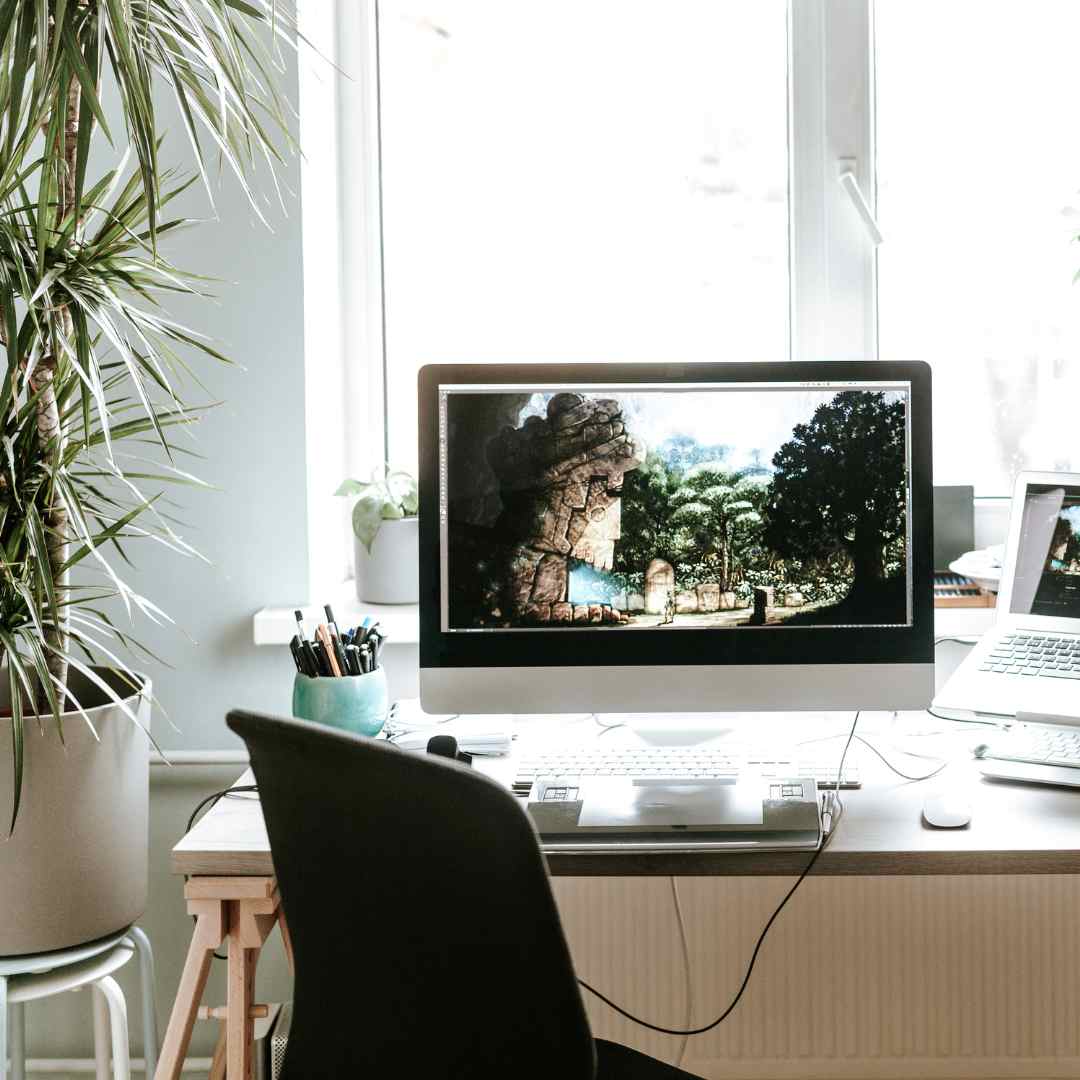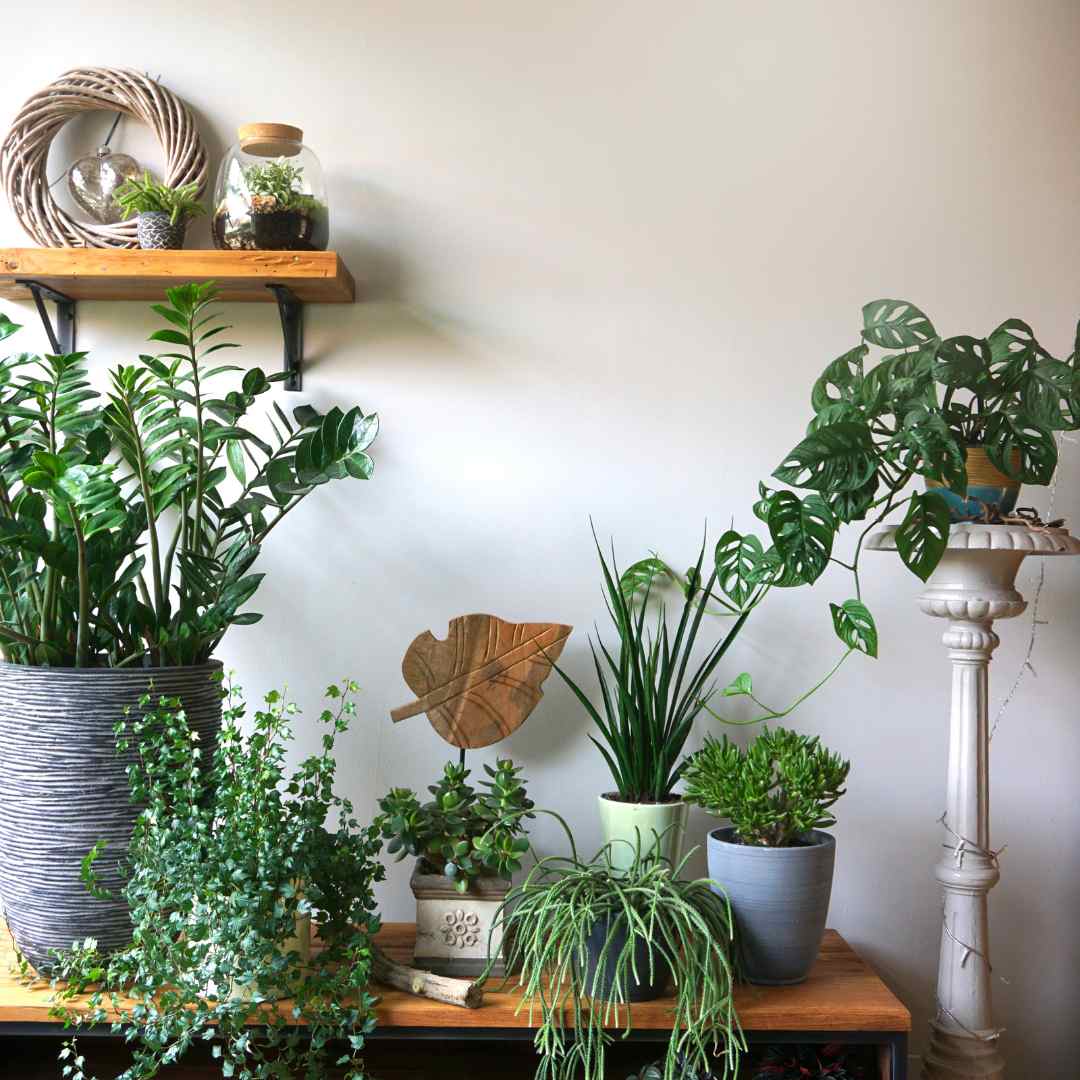Description
The Snake Plant (Sansevieria), also known as Mother-in-Law’s Tongue, is a popular and highly durable houseplant known for its upright, sword-like leaves. It is one of the easiest plants to grow and care for, making it ideal for both novice and experienced plant owners. Native to tropical regions of West Africa, Snake Plant Sansevieria thrives in a variety of conditions, from low light to bright indirect light. Its ability to tolerate drought and low maintenance needs makes it perfect for indoor spaces in the UAE, where hot and dry conditions often prevail. This guide will cover everything you need to know about caring for Snake Plant Sansevieria in the UAE climate.
1. Understanding the Snake Plant (Sansevieria)
Before delving into specific care instructions, it’s important to understand the basic characteristics of Snake Plant Sansevieria:
- Botanical Name: Sansevieria trifasciata (one of the most common species)
- Common Names: Snake Plant, Mother-in-Law’s Tongue, Sansevieria
- Plant Type: Evergreen succulent
- Height: Can grow up to 0.5 to 1 meter indoors
- Growth Habit: Upright, stiff, sword-like leaves
- Native Habitat: Tropical West Africa
The Snake Plant is revered for its ability to thrive in almost any indoor environment, from low-light corners to areas with bright, indirect light. Its hardy nature and ability to purify air make it a great addition to homes and offices in the UAE. Its distinct vertical leaves add an architectural element to any indoor space, making it both decorative and functional.
2. Placement: Ideal Location for Snake Plant Sansevieria in UAE
Indoor Placement
- Light Requirements: Snake Plant Sansevieria is highly adaptable when it comes to light conditions. It can tolerate low light, making it ideal for areas like hallways, bedrooms, and offices. However, it will grow faster and thrive best in bright, indirect light. In the UAE, where sunlight can be intense, place the plant in a location where it is protected from direct sun exposure to avoid leaf burn.
- Low-Light Tolerance: If you want to place your Snake Plant in low-light areas, such as bathrooms or rooms with minimal natural light, it will survive well but may grow more slowly.
Outdoor Placement (Optional)
While Snake Plants are primarily grown indoors, they can be placed outside in shaded areas such as patios or balconies. Just ensure they are not exposed to direct sunlight, especially during the peak UAE summer, as this can cause sunburn on the leaves.
3. Watering Snake Plant Sansevieria in UAE
Watering Needs
- Frequency: Snake Plants are succulents, meaning they store water in their leaves and are extremely drought-tolerant. Overwatering is the main cause of problems with Sansevieria. In the UAE’s hot and dry climate, water the plant sparingly—typically every 2-4 weeks during the summer and even less frequently during winter. Always let the soil dry out completely between waterings.
- Amount: When watering, make sure to water deeply, allowing excess water to drain out of the bottom of the pot. Never let the plant sit in water, as this can lead to root rot. The “soak and dry” method is best, where you soak the soil thoroughly and then let it dry out completely before the next watering.
- Humidity: The Snake Plant Sansevieria is very tolerant of dry air, which makes it ideal for indoor environments in the UAE, where air conditioning can lead to low humidity. It doesn’t require misting or additional humidity, making it a perfect low-maintenance option for dry climates.
Signs of Overwatering and Underwatering
- Overwatering: Yellowing leaves, mushy roots, and a soft texture to the plant are signs of overwatering. Reduce watering immediately and ensure that the soil has proper drainage.
- Underwatering: Although Snake Plants are drought-tolerant, prolonged periods of extreme dryness can lead to brown or crispy leaf edges. If this happens, increase the watering frequency slightly.
4. Soil and Fertilization for Snake Plant Sansevieria
Soil Requirements
- Type of Soil: Snake Plants prefer well-draining, sandy, or gritty soil. A cactus or succulent potting mix is ideal for these plants. In the UAE, where soil conditions may vary, using a store-bought succulent or cactus mix ensures the soil is airy and drains water quickly, reducing the risk of root rot.
- Repotting: Snake Plants are slow growers and only need repotting every 2-3 years or when the plant becomes root-bound. The best time to repot is during the spring or summer. Choose a pot that’s 1-2 inches larger than the current one to give the roots room to grow.
Fertilization
- Type of Fertilizer: Snake Plants do not require heavy feeding. A balanced, slow-release liquid fertilizer (such as a 10-10-10) diluted to half strength is ideal. Fertilize during the growing season (spring and summer) every 2-3 months.
- Frequency: Fertilize sparingly—once every two to three months is sufficient. Avoid fertilizing during the winter months when the plant’s growth slows down.
- Organic Fertilizers: If you prefer a more natural approach, organic fertilizers like compost or fish emulsion can be used. These provide a slow, steady release of nutrients and help improve the soil quality.
5. Temperature and Humidity for Snake Plant Sansevieria
Temperature
- Ideal Range: Snake Plants prefer temperatures between 18-30°C, which aligns well with typical indoor conditions in the UAE. They can tolerate higher temperatures but should be protected from extreme cold. They are not frost-tolerant and will suffer if exposed to temperatures below 10°C.
- Avoid Temperature Extremes: Avoid placing your Snake Plant near cold drafts, air conditioning vents, or heaters. The plant can survive in a range of temperatures, but sudden changes can stress it.
Humidity
- Humidity Requirements: Snake Plants thrive in low to moderate humidity, making them perfect for the UAE’s dry indoor environments. They do not require high humidity, and misting is unnecessary. In fact, they prefer the dry air found in air-conditioned homes and offices.
6. Pruning and Cleaning the Snake Plant Sansevieria
Pruning
- Encouraging Healthy Growth: Snake Plants generally don’t require much pruning. However, you can remove damaged, yellowing, or older leaves at the base to keep the plant looking healthy. This also prevents the plant from wasting energy on non-viable parts.
- Cutting Back for Size Management: If the plant grows too tall or wide for its space, you can trim individual leaves by cutting them at the base of the plant with clean, sharp scissors or pruning shears.
Cleaning
- Dusting the Leaves: Snake Plant leaves can collect dust, which can block light and reduce the plant’s ability to photosynthesize. Regularly wipe the leaves with a damp cloth to remove dust and keep the leaves shiny. This is especially important in the UAE’s dusty environment.
7. Pests and Diseases in UAE
The Snake Plant Sansevieria is generally pest-resistant, but like all plants, it can occasionally face issues, particularly in indoor environments.
Common Pests
- Spider Mites: These tiny pests thrive in dry environments and can cause yellow or brown speckling on the leaves. Increase humidity slightly by misting around the plant and treat infestations with neem oil or insecticidal soap.
- Mealybugs: Mealybugs leave a white, cottony residue on leaves and stems. They can be removed with a cotton swab dipped in rubbing alcohol or treated with insecticidal soap.
- Scale Insects: These small, brown pests may attach themselves to the plant’s leaves. They can be removed manually using a damp cloth or treated with organic insecticides.
Common Diseases
- Root Rot: The most common problem for Snake Plants is root rot, caused by overwatering or poor drainage. Symptoms include mushy, soft leaves and yellowing. To prevent root rot, ensure the soil dries out completely between waterings and that the pot has adequate drainage holes.
- Leaf Spot: Fungal or bacterial infections can cause brown or black spots on the leaves. Remove affected leaves and improve air circulation around the plant to prevent further spread.
8. Propagation of Snake Plant Sansevieria
Snake Plants are easy to propagate, making them a great choice for expanding your collection or sharing with friends.
Propagation by Division
- Dividing the Plant: One of the easiest ways to propagate a Snake Plant is by dividing the root ball when repotting. Carefully remove the plant from its pot and divide the rhizomes (thick, root-like structures) into sections with at least one healthy leaf.
- Planting the Divisions: Replant each section into its own pot filled with a well-draining cactus or succulent mix. Water lightly after planting and place the divisions in indirect light.
Propagation by Leaf Cuttings
- Choosing a Cutting: Take a healthy leaf from the plant and cut it into sections about 4-5 inches long.
- Planting the Cutting: Place the cuttings into a pot filled with well-draining soil, ensuring the cut end is planted into the soil. Water lightly and keep the soil moist until roots form.
- Root Development: It may take several weeks for the cutting to establish roots. Once new growth appears, reduce watering frequency.
9. Seasonal Care for Snake Plant Sansevieria in UAE
Summer Care
- Watering: During the hot UAE summer months, reduce the watering frequency but be mindful of the indoor humidity and temperature. Water once every 2-4 weeks, depending on the dryness of the soil. Avoid placing the plant in direct sunlight to prevent leaf burn.
- Light: While Snake Plants tolerate low light, placing them in a spot with bright indirect light will encourage faster growth during the growing season.
Winter Care
- Watering: In the cooler months, reduce watering even further. Water only once every 4-6 weeks, as the plant will enter a semi-dormant period and require less moisture.
- Temperature Protection: Keep the plant in a stable, warm environment. Avoid cold drafts or placing the plant near air conditioners that might expose it to sudden drops in temperature.
10. Common Snake Plant Sansevieria Problems and Solutions
Yellowing Leaves
- Cause: Yellow leaves are often a sign of overwatering or root rot.
- Solution: Reduce watering, allow the soil to dry out completely between waterings, and ensure the plant is in a well-draining pot.
Brown Leaf Tips
- Cause: Brown tips may result from underwatering or exposure to direct sunlight.
- Solution: Increase watering slightly and move the plant away from direct sunlight to prevent leaf burn.
Slow Growth
- Cause: Slow growth is often due to insufficient light or a lack of nutrients.
- Solution: Move the plant to a brighter location with indirect light and consider fertilizing during the growing season.
11. Benefits of Growing Snake Plant Sansevieria
Air Purification
- NASA Clean Air Study: Snake Plants are known for their ability to remove toxins from the air, such as formaldehyde, benzene, and trichloroethylene. This makes them ideal for improving indoor air quality in homes and offices in the UAE.
Low Maintenance
- Minimal Care Requirements: Snake Plants are incredibly resilient and require little attention, making them perfect for those with busy schedules or less experience in plant care. They can tolerate neglect, low light, and infrequent watering.
Aesthetic Appeal
- Decorative and Versatile: With their bold, upright leaves, Snake Plants add a modern, minimalist look to any space. Their sculptural form makes them perfect for entryways, living rooms, offices, and bedrooms.
12. Sustainable Care for Snake Plant Sansevieria
Water Conservation
- Efficient Watering: Due to the Snake Plant’s low water needs, it’s a sustainable choice for indoor gardening in the UAE. Water the plant sparingly and use collected rainwater or filtered water to prevent mineral buildup in the soil.
Organic Fertilizers
- Natural Fertilization: Use compost or slow-release organic fertilizers to provide gentle, long-lasting nutrients. Organic fertilizers also improve soil health over time and reduce the need for chemical treatments.
13. Repotting Snake Plant Sansevieria
When to Repot
- Signs It’s Time to Repot: Repot your Snake Plant every 2-3 years, or when the plant becomes root-bound. If you notice roots growing out of the drainage holes or the plant’s growth slows, it’s time for a new pot.
Steps for Repotting
- Choose a New Pot: Select a pot that is 1-2 inches larger than the current one. Ensure the new pot has drainage holes.
- Prepare the Soil: Use a well-draining cactus or succulent mix with added sand or perlite for extra aeration.
- Repotting Process: Gently remove the plant from its pot, shake off excess soil, and place it in the new pot. Fill the remaining space with fresh soil and water lightly.
The Snake Plant (Sansevieria) is a hardy, low-maintenance plant that thrives in the dry, hot climate of the UAE, making it an ideal choice for indoor spaces. Its ability to tolerate low light, minimal watering, and a range of temperatures makes it perfect for homes and offices. By following this care guide, you’ll ensure your Snake Plant remains healthy and vibrant year-round, providing both aesthetic beauty and air purification for your indoor environment.
Whether you’re a novice or an experienced plant enthusiast, the Snake Plant’s resilience and architectural beauty make it a must-have for any indoor space.
FAQ: Snake Plant (Sansevieria) Care, Benefits, and Buying Guide
The snake plant, scientifically known as Sansevieria, is one of the most popular and low-maintenance houseplants. It is beloved for its unique, upright sword-like leaves and ability to thrive in a wide range of conditions. Native to West Africa, this plant is known by various names such as mother-in-law’s tongue, viper’s bowstring hemp, and St. George’s sword.
In this comprehensive FAQ, we will explore everything you need to know about the snake plant (Sansevieria), including how to care for it, its benefits, and where to buy it in the UAE.
1. What is a Snake Plant (Sansevieria)?
The snake plant (Sansevieria) is a hardy, drought-tolerant houseplant that features long, upright leaves with distinctive green and yellow variegated patterns. It is a succulent plant that stores water in its thick leaves, allowing it to survive in low-water environments. Snake plants are excellent for both beginners and experienced plant owners due to their low maintenance and adaptability to various growing conditions.
2. What are the benefits of owning a Snake Plant (Sansevieria)?
Owning a Sansevieria comes with several benefits, including:
- Air Purification: The snake plant is known for its ability to remove toxins from the air, including formaldehyde, benzene, and xylene. It is also one of the few plants that can convert carbon dioxide into oxygen at night, making it ideal for bedrooms.
- Low Maintenance: This plant requires minimal care, tolerating low light, irregular watering, and fluctuating temperatures, making it perfect for busy individuals or beginner plant owners.
- Aesthetic Appeal: With its architectural shape and bold leaves, the snake plant adds a modern, minimalist look to any room or office space.
- Health Benefits: Snake plants contribute to cleaner indoor air, which can help reduce the risk of headaches, eye irritation, and respiratory problems caused by poor air quality.
3. Where can I buy a Snake Plant (Sansevieria) online in the UAE?
You can buy a snake plant (Sansevieria) online in the UAE from reputable plant stores like Adplants.com. They offer a wide range of snake plants, including different varieties and sizes, with free delivery and a freshness guarantee. You can choose from decorative pots or standard containers to match your home or office decor.
4. How do I care for a Snake Plant (Sansevieria)?
Caring for a Sansevieria is straightforward:
- Light: Snake plants can tolerate low light but thrive in bright, indirect light. They can even handle some direct sunlight, but avoid prolonged exposure to prevent scorching the leaves.
- Watering: Water the plant when the soil is completely dry. Snake plants prefer to be on the dry side and can go weeks without watering. Overwatering can lead to root rot, so it’s important to let the soil dry out between waterings.
- Soil: Use well-draining soil, such as a cactus or succulent mix. Avoid soil that retains too much moisture.
- Temperature: Snake plants prefer temperatures between 15°C and 29°C (60°F to 85°F). They can tolerate lower temperatures but should not be exposed to freezing conditions.
- Fertilizer: Fertilize the plant once or twice during the growing season (spring and summer) using a balanced, diluted houseplant fertilizer.
5. How often should I water my Snake Plant (Sansevieria)?
Snake plants are drought-tolerant and do not need frequent watering. Water your Sansevieria when the top 1-2 inches of soil are completely dry. During the summer months, you may need to water it every 2-3 weeks, while in winter, you can water it even less frequently, about once a month or whenever the soil dries out.
Overwatering is one of the most common mistakes, so make sure the plant isn’t sitting in soggy soil.
6. Can Snake Plants (Sansevieria) survive in low light?
Yes, Sansevieria is highly adaptable and can survive in low-light conditions, making it an ideal plant for rooms with minimal natural light. However, snake plants will grow more slowly in low light, and their variegation may become less pronounced. For optimal growth and vibrant colors, place the plant in bright, indirect light.
7. What type of soil is best for Snake Plants (Sansevieria)?
Snake plants prefer well-draining soil, similar to what is used for cacti or succulents. A mixture of regular potting soil and sand or perlite works well to ensure that the soil doesn’t retain too much moisture, which can lead to root rot. You can also use a ready-made cactus or succulent mix for convenience.
8. How do I repot my Snake Plant (Sansevieria)?
Repotting a snake plant is easy and only needs to be done every 2-3 years or when the plant outgrows its current container. Follow these steps:
- Choose a new pot: Select a pot that is 1-2 inches larger in diameter than the current one, with drainage holes at the bottom.
- Prepare the soil: Use a well-draining soil mix, like a cactus or succulent blend.
- Remove the plant: Gently slide the plant out of its old pot, being careful not to damage the roots.
- Replant: Place the plant in the new pot, add fresh soil around it, and press down gently to secure it.
- Water: After repotting, water the plant lightly and let the soil dry out before watering again.
9. Can I propagate my Snake Plant (Sansevieria)?
Yes, snake plants are easy to propagate. The most common methods are:
- Division: Separate the plant by cutting or pulling apart its root system into smaller sections. Each section should have at least one healthy leaf and some roots. Replant the divisions in separate pots with well-draining soil.
- Leaf Cuttings: Cut a healthy leaf into 2-3 inch sections. Allow the cuttings to dry for a few days before planting them upright in moist soil. It can take several weeks for roots to develop.
10. Is the Snake Plant (Sansevieria) safe for pets?
No, Sansevieria is toxic to pets if ingested. It contains saponins, which can cause gastrointestinal upset, such as nausea, vomiting, and diarrhea, in cats and dogs. If you have pets, place the plant out of their reach, or choose a non-toxic plant alternative.
11. How large does a Snake Plant (Sansevieria) grow?
Snake plants can vary in size depending on the variety and growing conditions. The typical indoor snake plant can grow up to 2-4 feet tall. In ideal conditions, some varieties can grow even taller. Outdoor snake plants, in warmer climates, may grow larger, but indoors, they typically stay compact and manageable.
12. Does the Snake Plant (Sansevieria) need fertilizer?
Although snake plants are not heavy feeders, you can fertilize them during the growing season (spring and summer) to encourage healthier growth. Use a balanced, diluted houseplant fertilizer once or twice during the growing season. Avoid fertilizing in the fall and winter when the plant’s growth slows down.
13. How do I prune my Snake Plant (Sansevieria)?
Snake plants don’t require much pruning, but you can trim off any yellow or damaged leaves near the base of the plant using clean, sharp scissors. This will help maintain the plant’s appearance and overall health. Additionally, pruning helps control the size of the plant if it starts to grow too large for its space.
14. Can I grow a Snake Plant (Sansevieria) outdoors?
Yes, snake plants can be grown outdoors in warm climates. They prefer partial to full sunlight when grown outdoors, and they need well-draining soil. Snake plants cannot tolerate frost or freezing temperatures, so in colder climates, they should be brought indoors during the winter months.
15. What are common problems with Snake Plants (Sansevieria)?
Snake plants are generally resilient, but they can face a few common issues:
- Overwatering: The most common problem is overwatering, which can lead to root rot. Make sure to let the soil dry out completely between waterings.
- Leaf yellowing: Yellow leaves can indicate overwatering or a lack of sunlight. Adjust your watering routine and light exposure accordingly.
- Pests: While relatively pest-resistant, snake plants can sometimes attract spider mites or mealybugs. Wipe the leaves with a damp cloth and use insecticidal soap if needed.
16. Why is my Snake Plant (Sansevieria) turning yellow?
Yellowing leaves are usually a sign of overwatering. Snake plants store water in their leaves, so they don’t need frequent watering. Always let the soil dry out completely between waterings to prevent root rot. Additionally, check that the pot has adequate drainage to avoid soggy soil.
17. Can I place my Snake Plant (Sansevieria) in the bedroom?
Yes, snake plants are ideal for bedrooms. Unlike many other plants, Sansevieria releases oxygen at night and removes toxins from the air, improving indoor air quality while you sleep. Its ability to purify the air makes it one of the best houseplants for a restful environment.
18. How do I clean the leaves of my Snake Plant (Sansevieria)?
To keep your snake plant looking its best and to help it absorb light more effectively, gently wipe the leaves with a damp cloth every few weeks. This will remove dust and dirt that can accumulate on the leaves over time. Avoid using harsh cleaning agents, as they can damage the plant.
19. How long does a Snake Plant (Sansevieria) live?
With proper care, snake plants can live for many years, often up to 10 years or more. Some varieties have been known to live even longer. Their resilience and ability to thrive with minimal care make them a long-lasting addition to any home or office.
20. Why should I choose a Snake Plant (Sansevieria) for my home or office?
Snake plants are an excellent choice for homes and offices due to their low maintenance, air-purifying qualities, and ability to thrive in various environments. They are especially suited for those with busy lifestyles or limited experience with houseplants. Their upright, architectural shape also adds a modern touch to any space, making them both functional and decorative.
This comprehensive FAQ should cover everything you need to know about snake plants (Sansevieria), from their care and benefits to purchasing and maintaining them. Whether you are a beginner plant owner or an experienced gardener, the snake plant is a perfect addition to any indoor or outdoor space.






